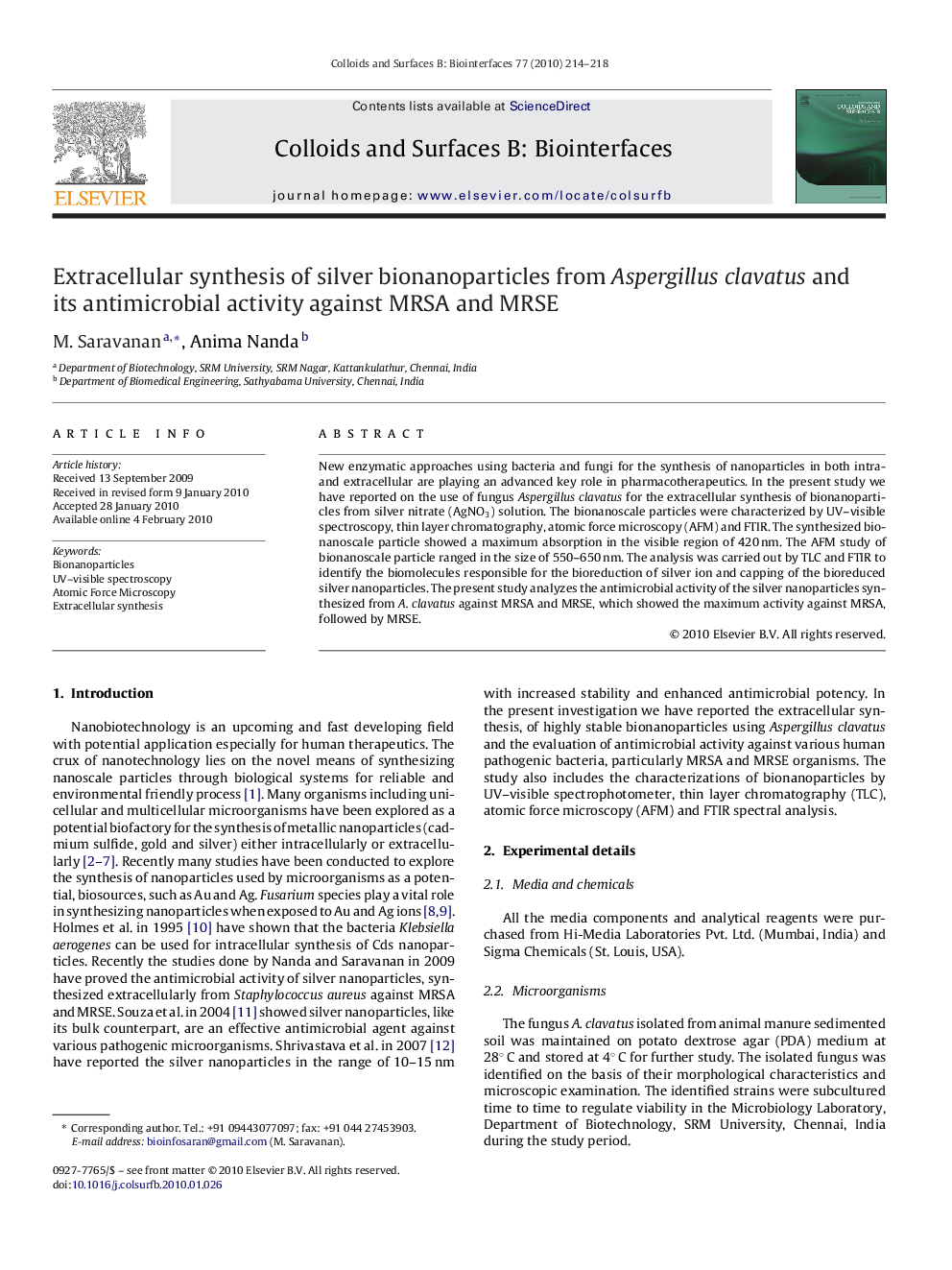| Article ID | Journal | Published Year | Pages | File Type |
|---|---|---|---|---|
| 601498 | Colloids and Surfaces B: Biointerfaces | 2010 | 5 Pages |
New enzymatic approaches using bacteria and fungi for the synthesis of nanoparticles in both intra- and extracellular are playing an advanced key role in pharmacotherapeutics. In the present study we have reported on the use of fungus Aspergillus clavatus for the extracellular synthesis of bionanoparticles from silver nitrate (AgNO3) solution. The bionanoscale particles were characterized by UV–visible spectroscopy, thin layer chromatography, atomic force microscopy (AFM) and FTIR. The synthesized bionanoscale particle showed a maximum absorption in the visible region of 420 nm. The AFM study of bionanoscale particle ranged in the size of 550–650 nm. The analysis was carried out by TLC and FTIR to identify the biomolecules responsible for the bioreduction of silver ion and capping of the bioreduced silver nanoparticles. The present study analyzes the antimicrobial activity of the silver nanoparticles synthesized from A. clavatus against MRSA and MRSE, which showed the maximum activity against MRSA, followed by MRSE.
